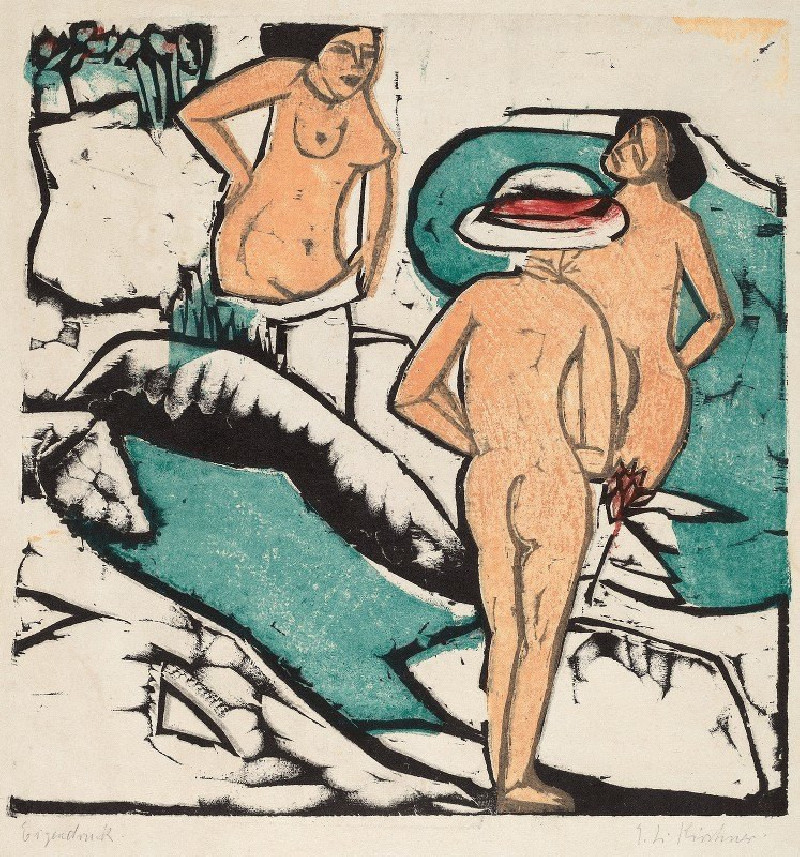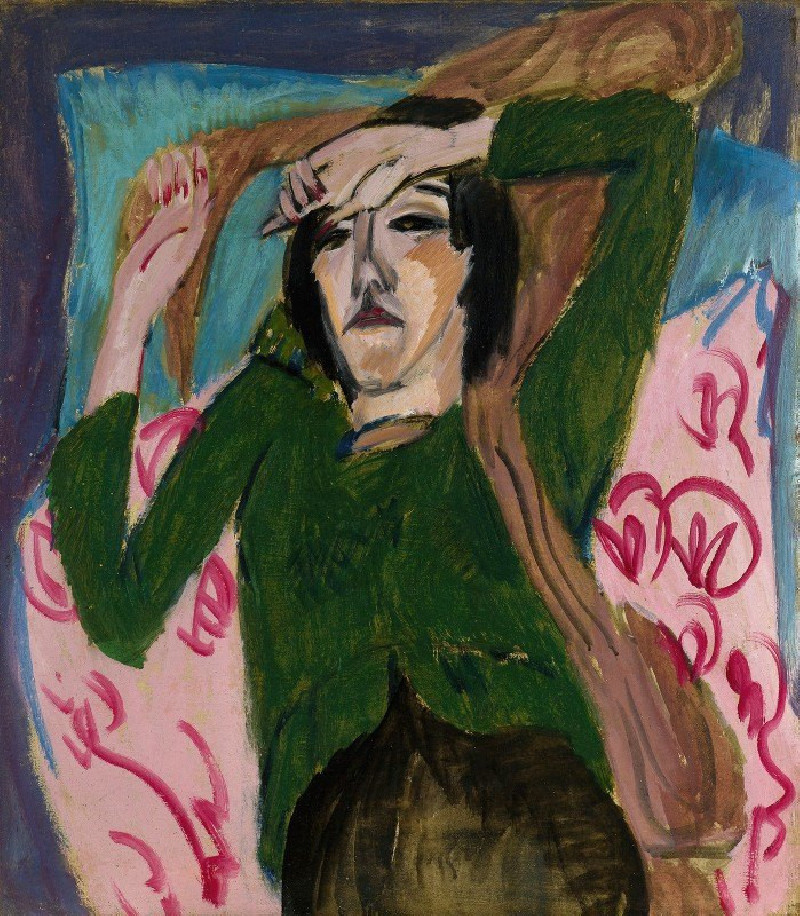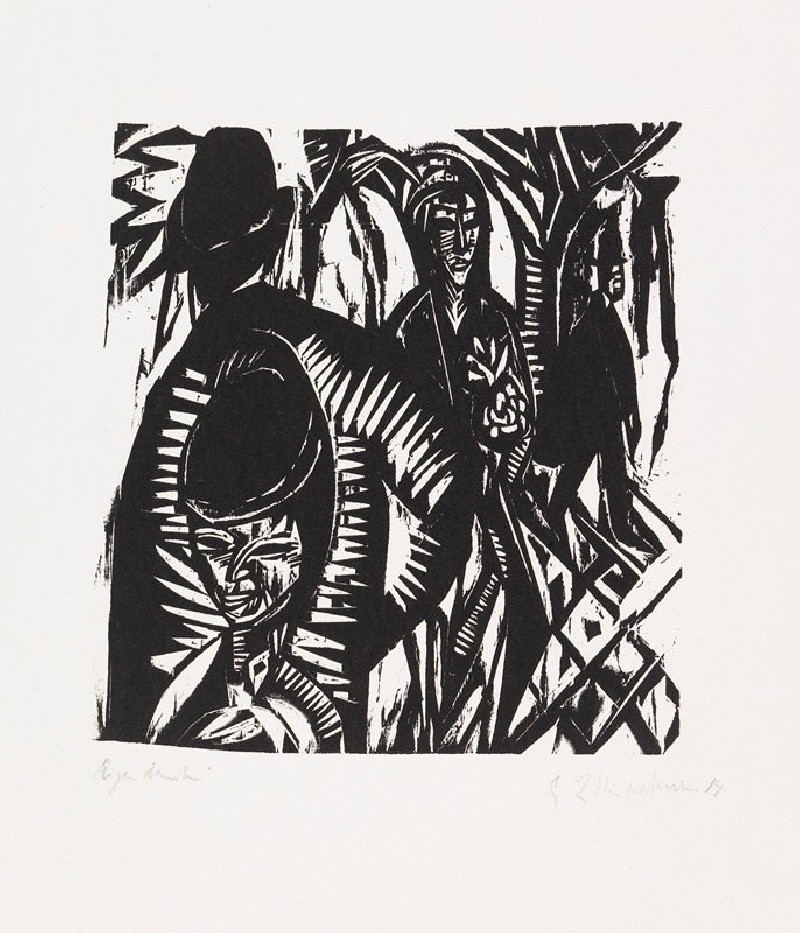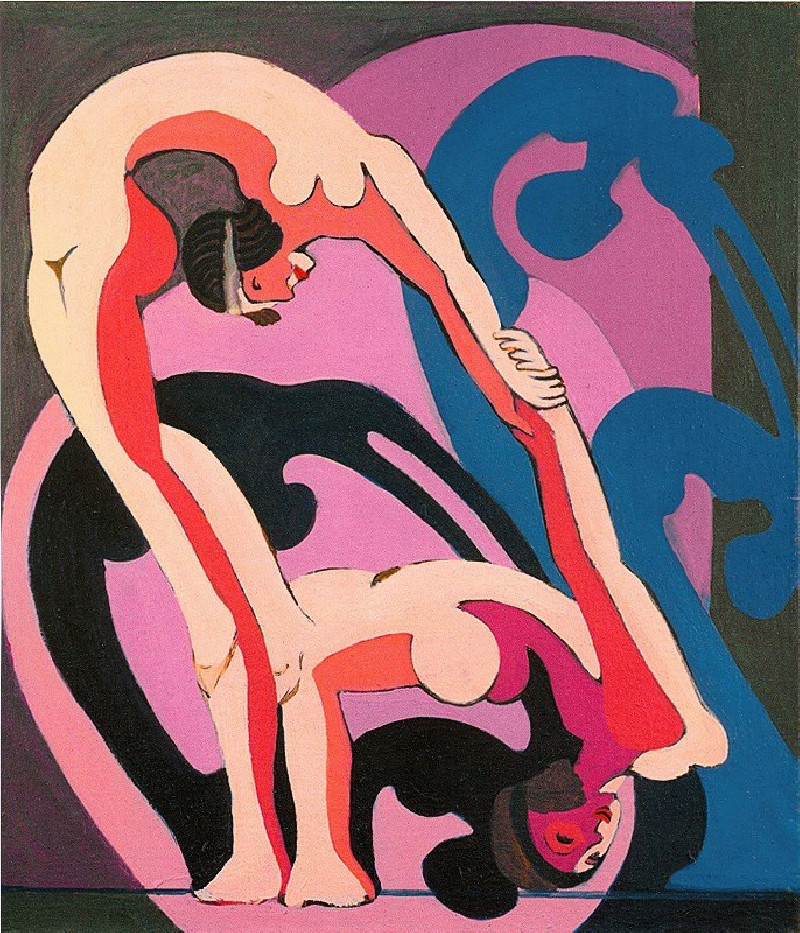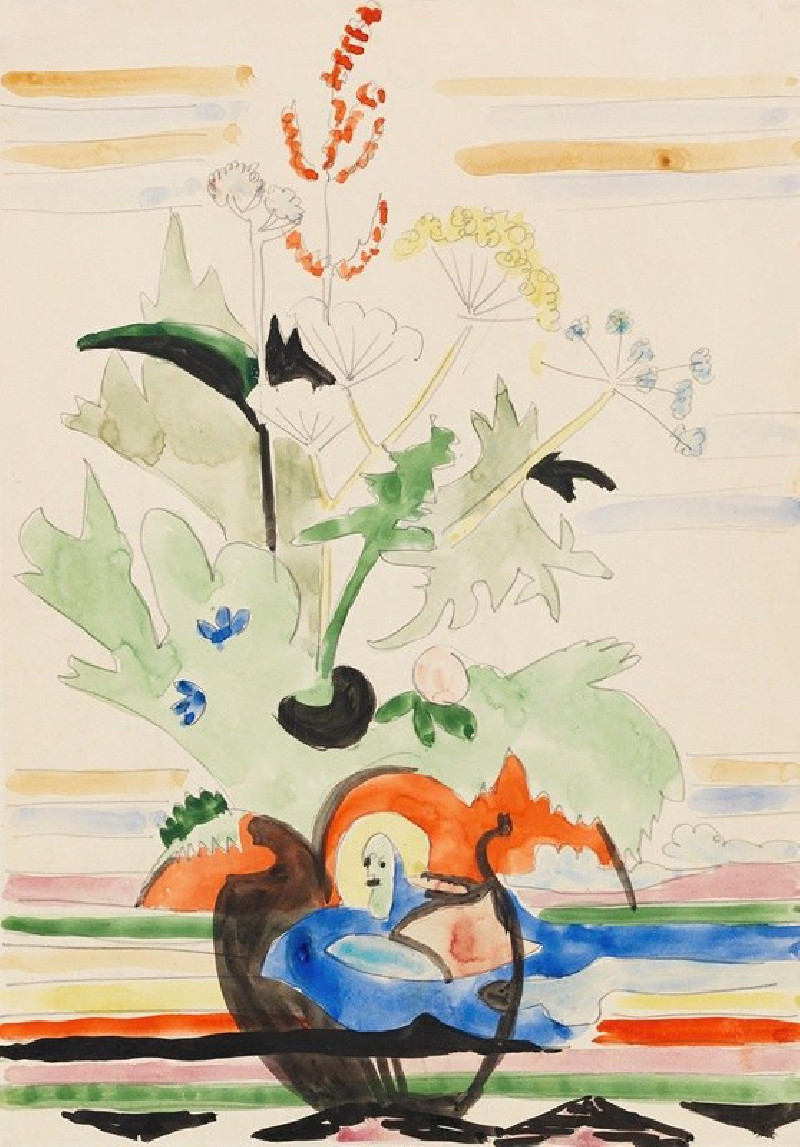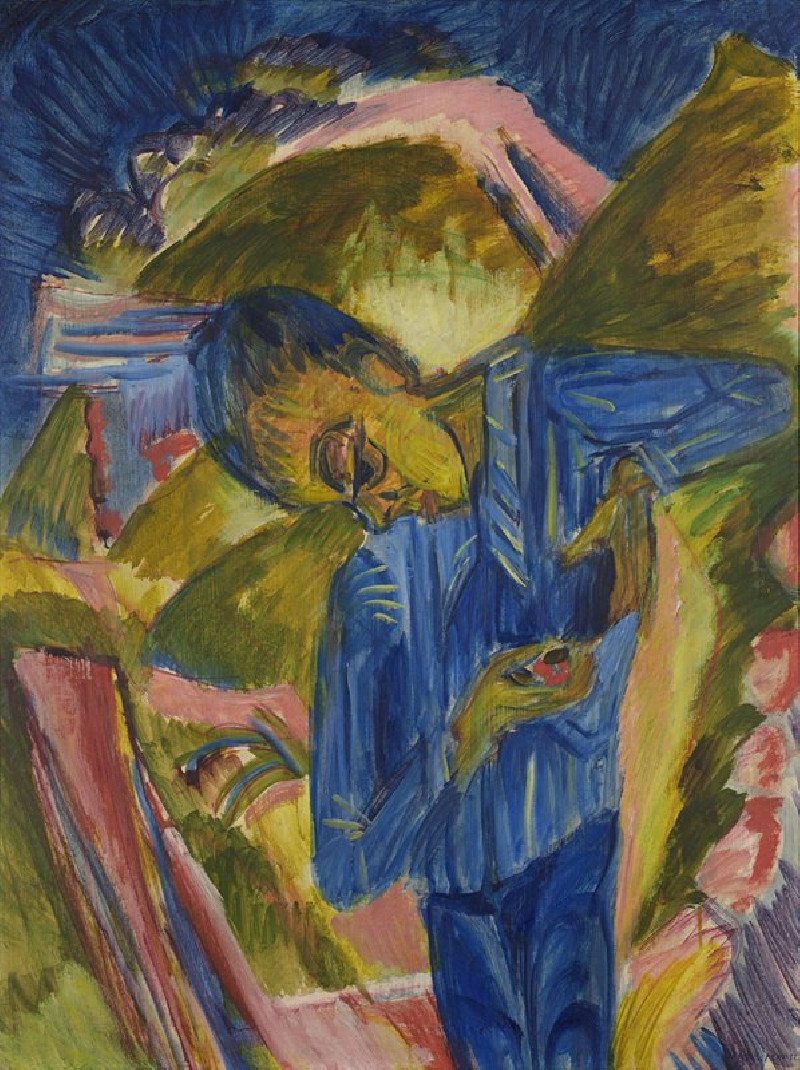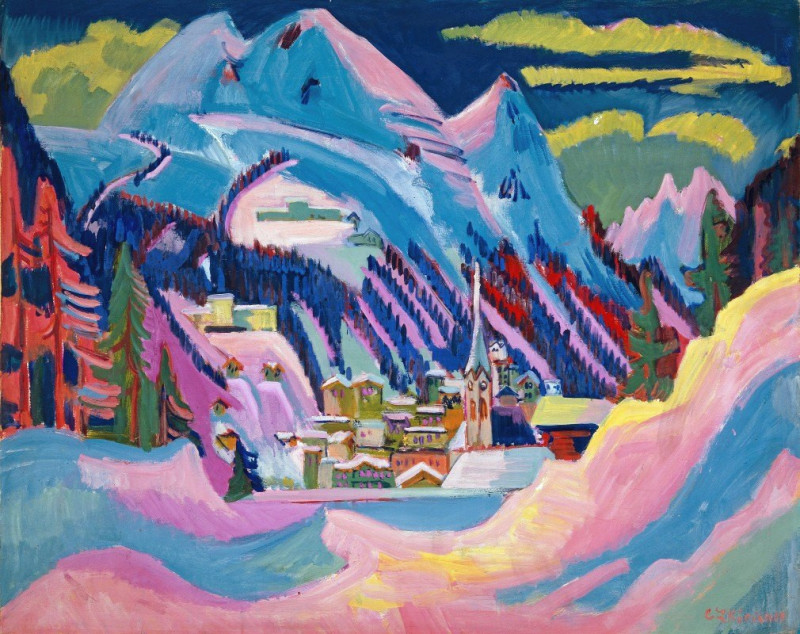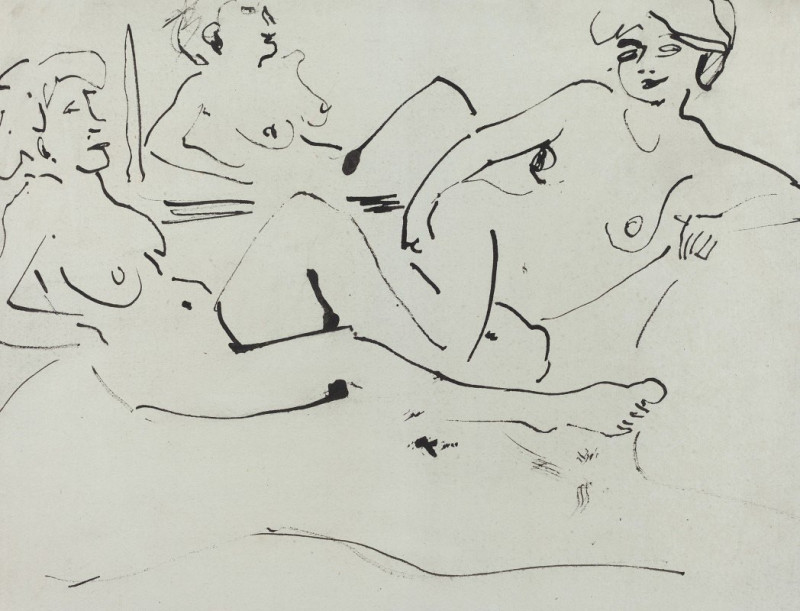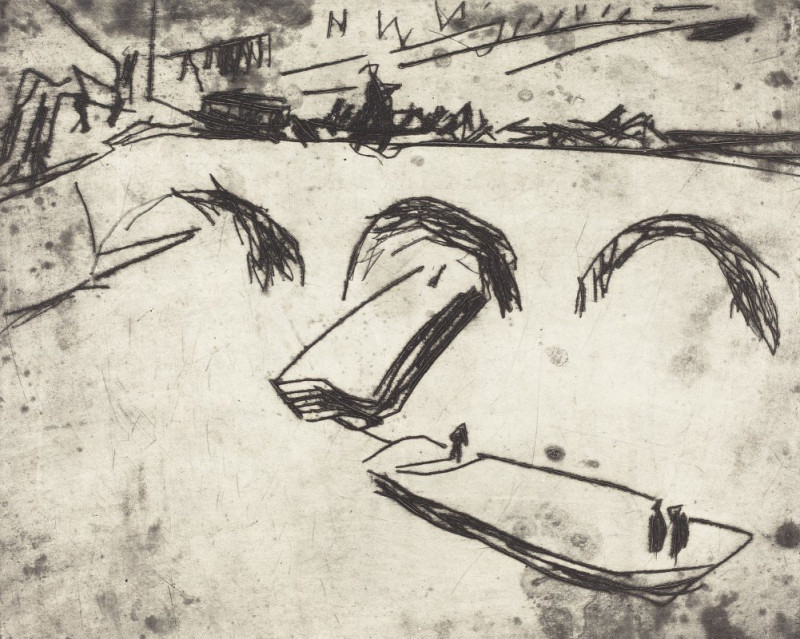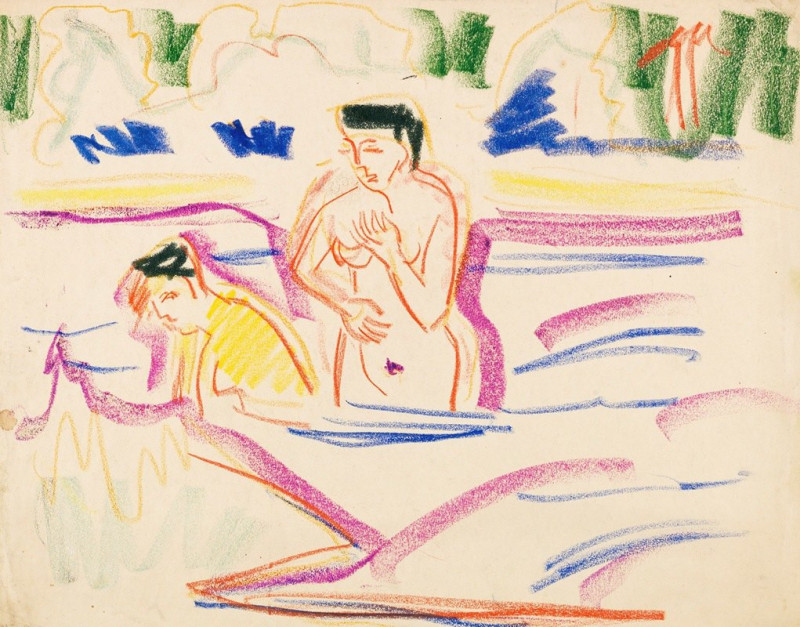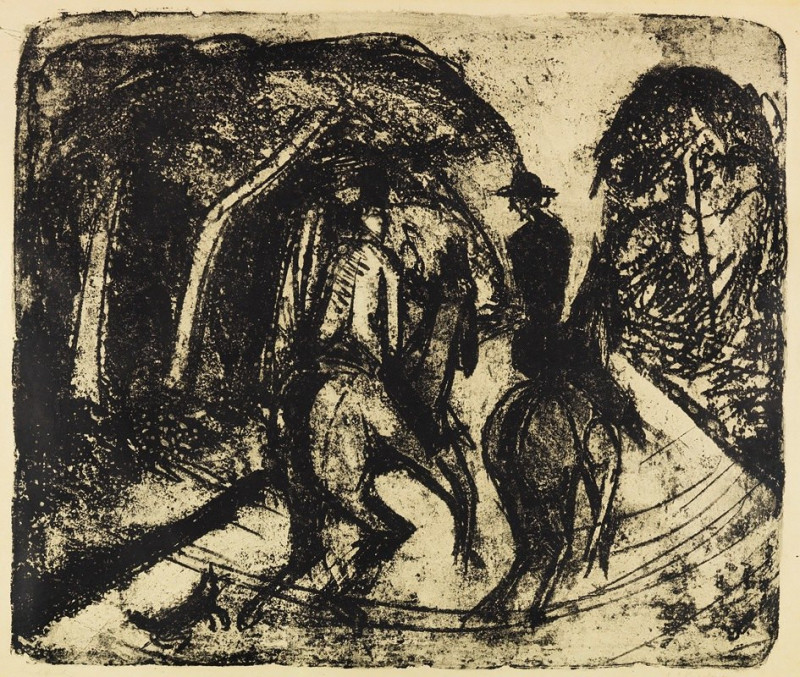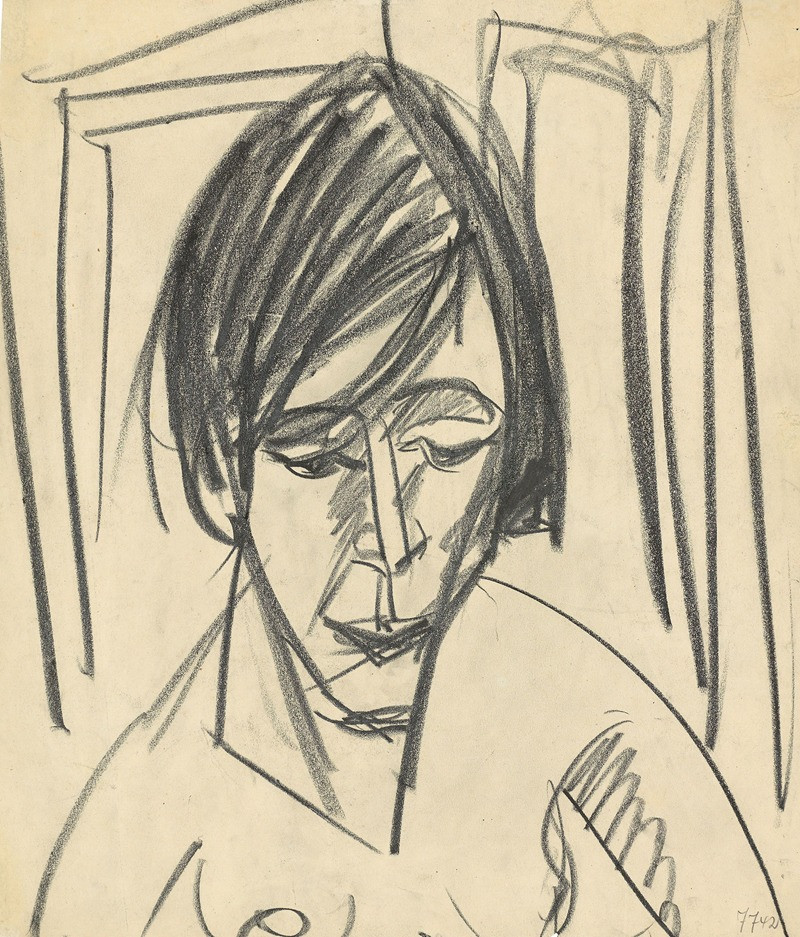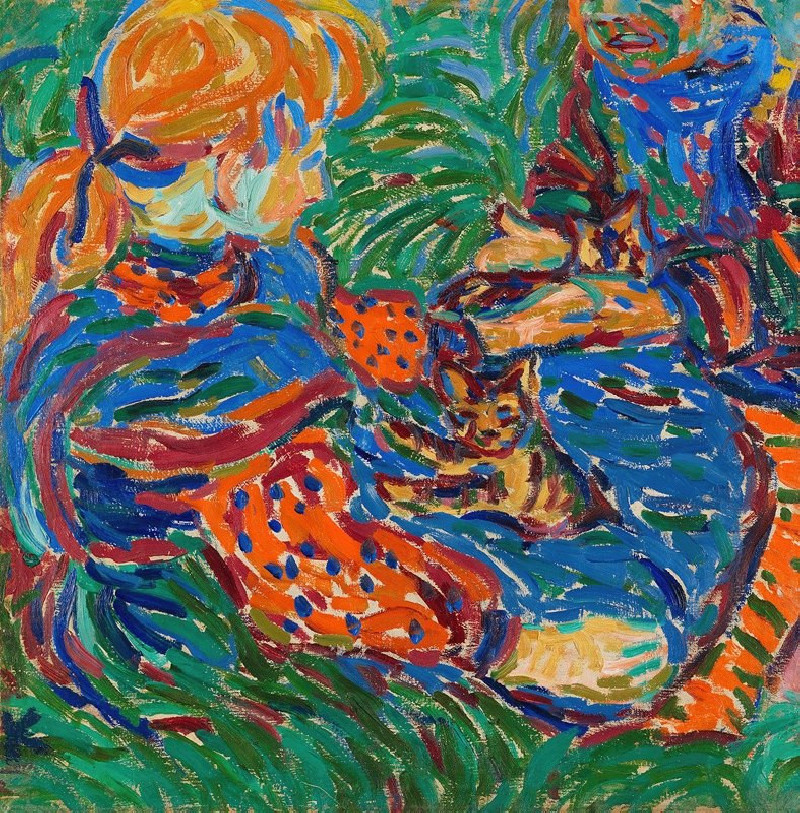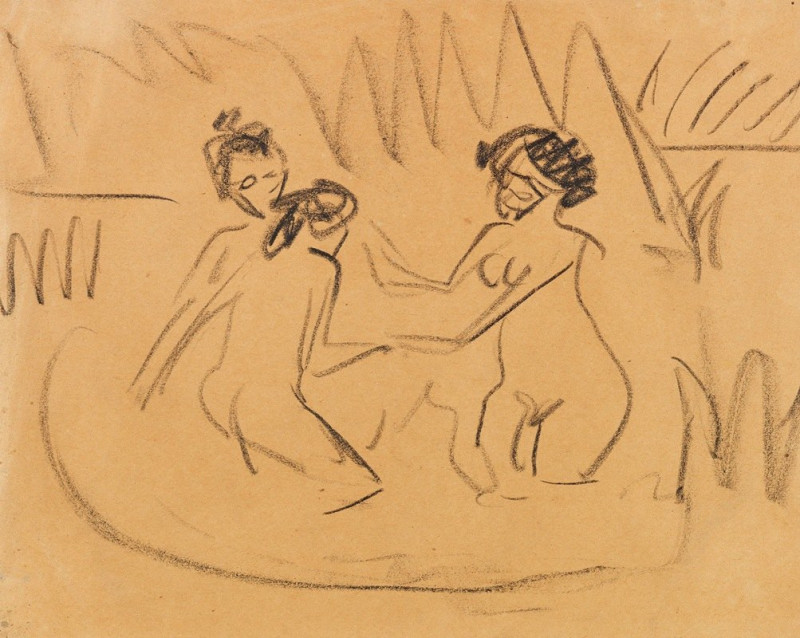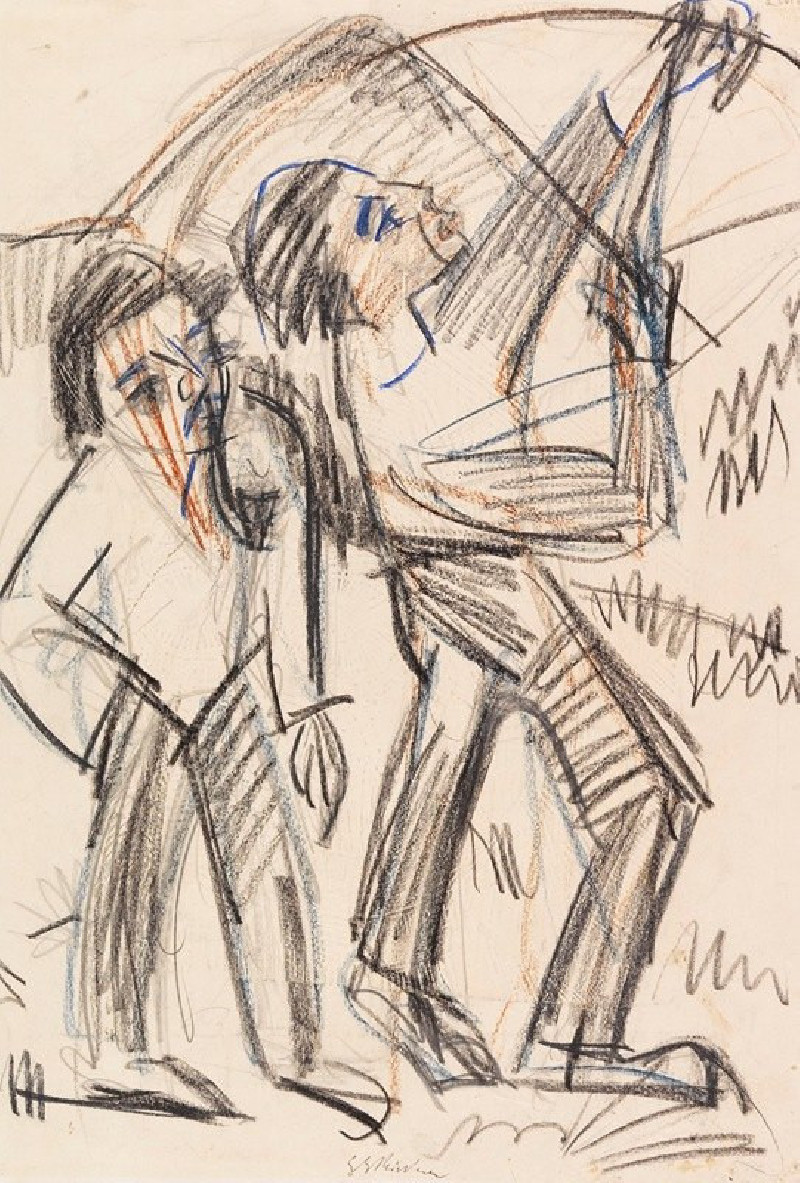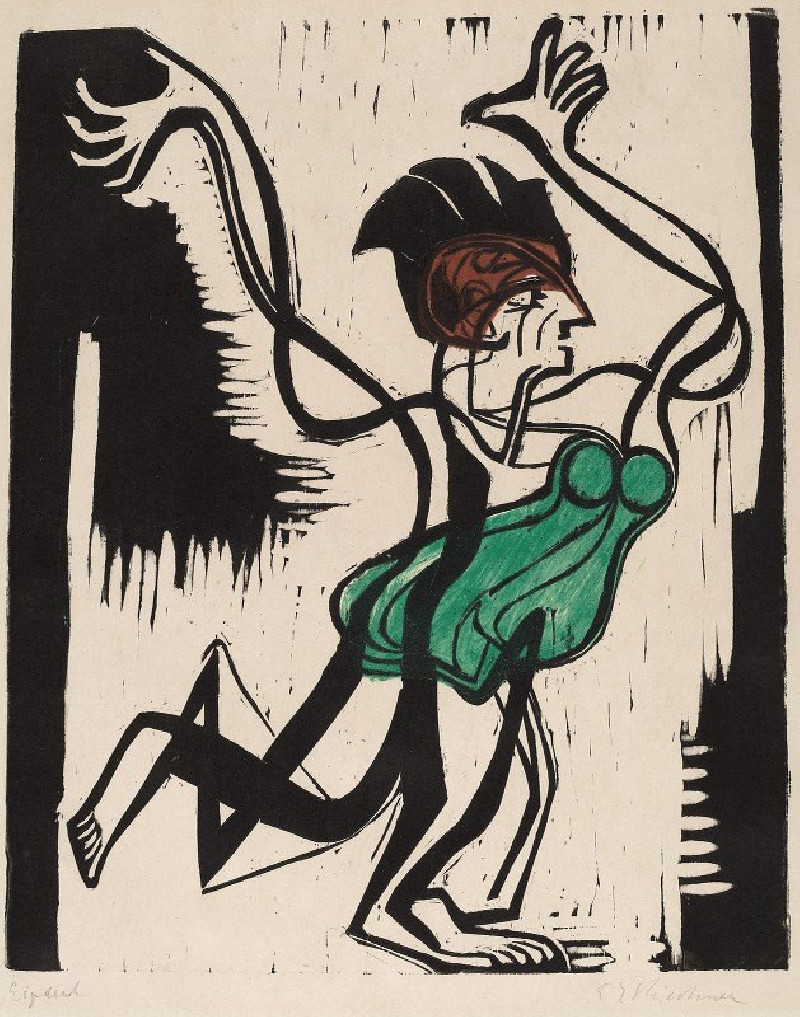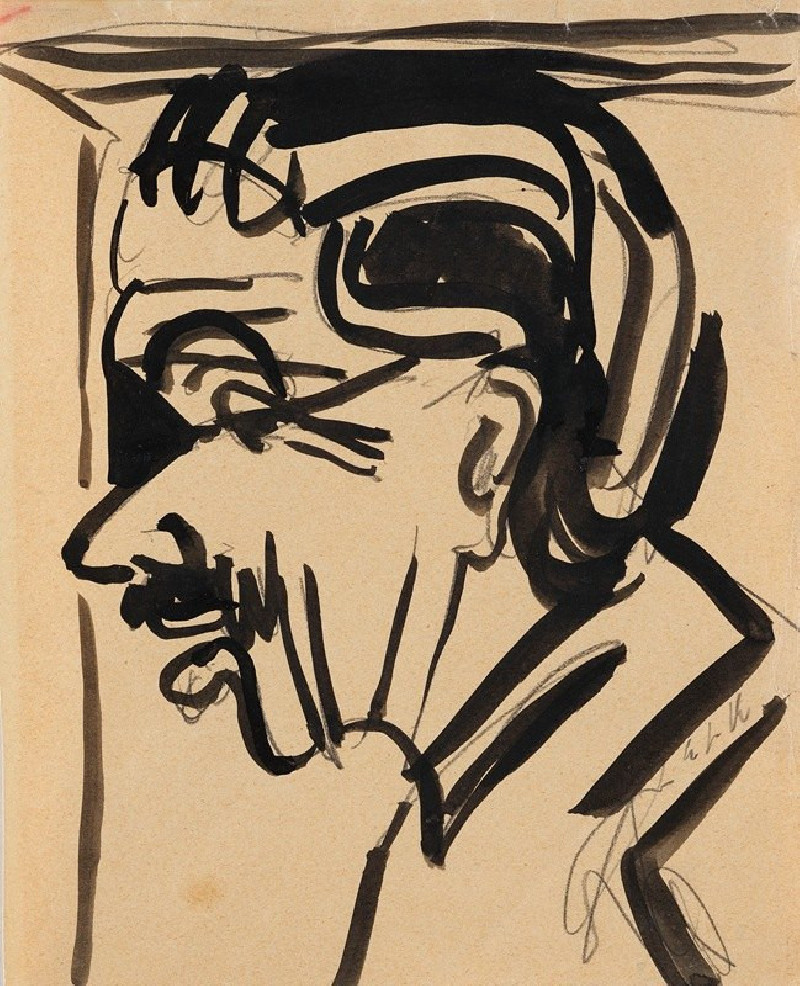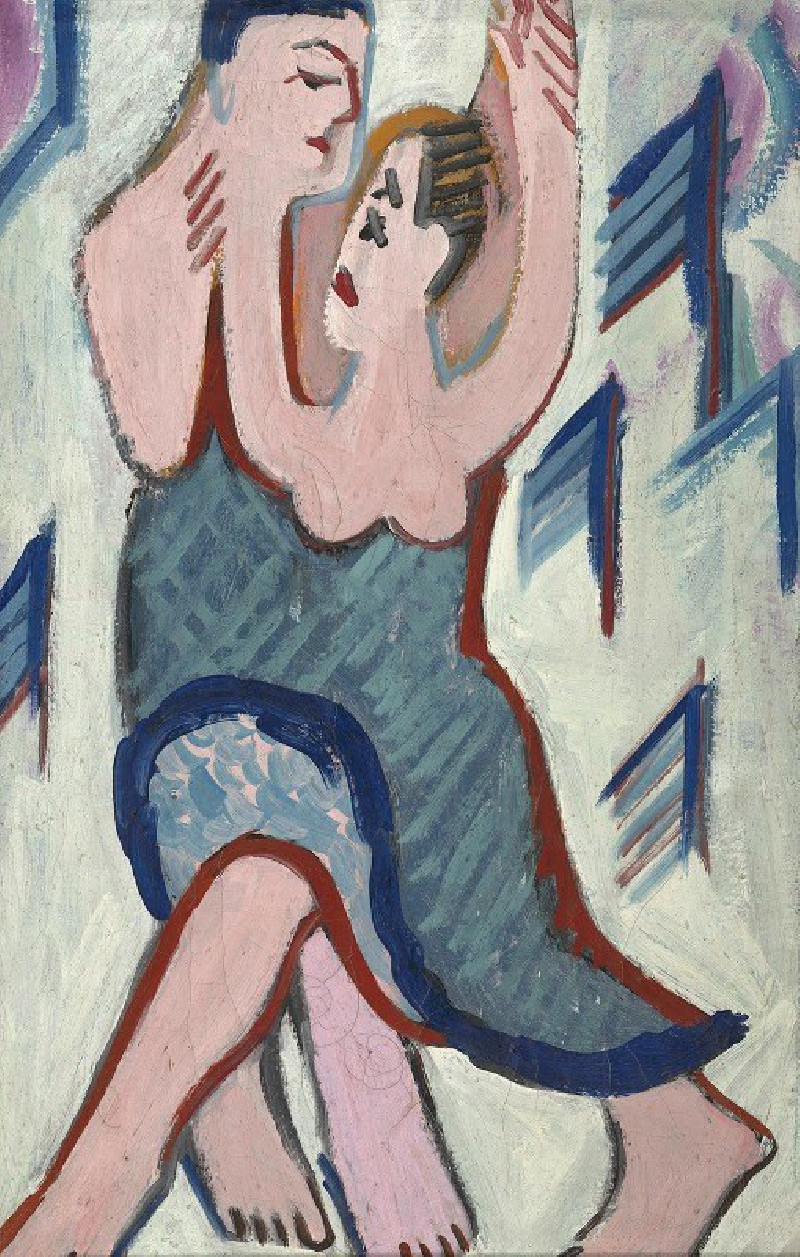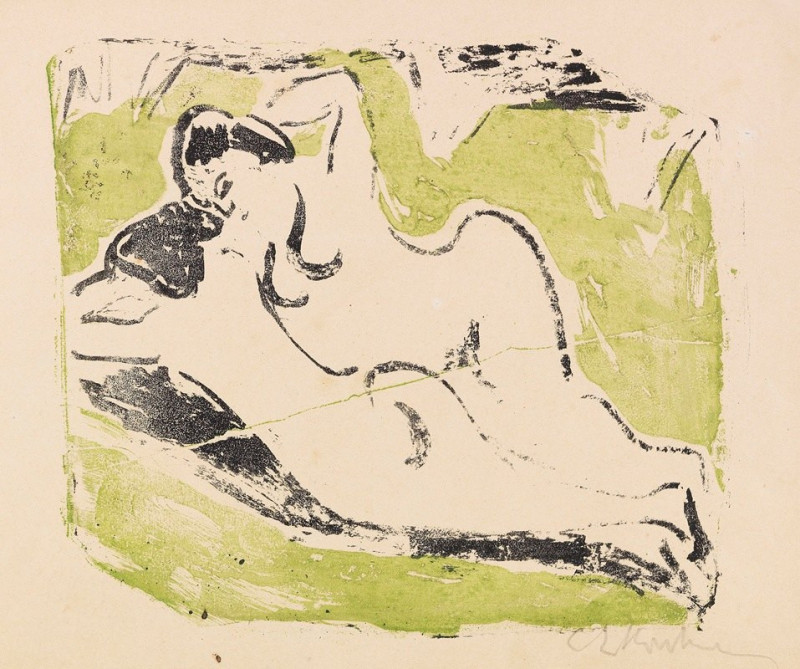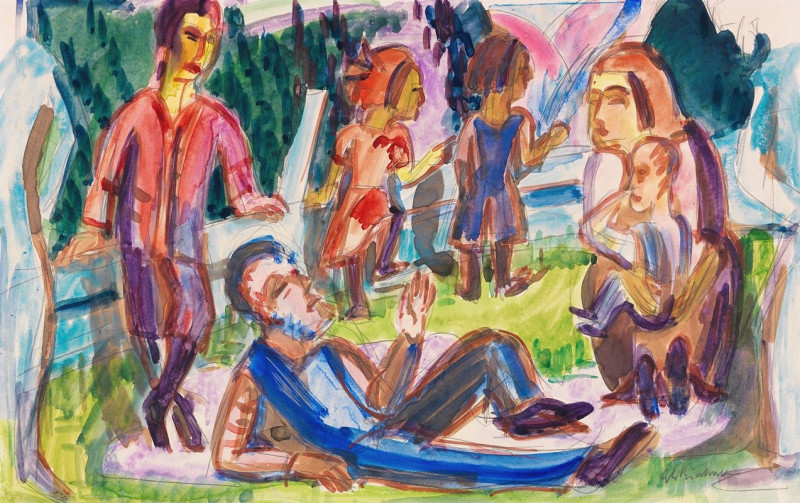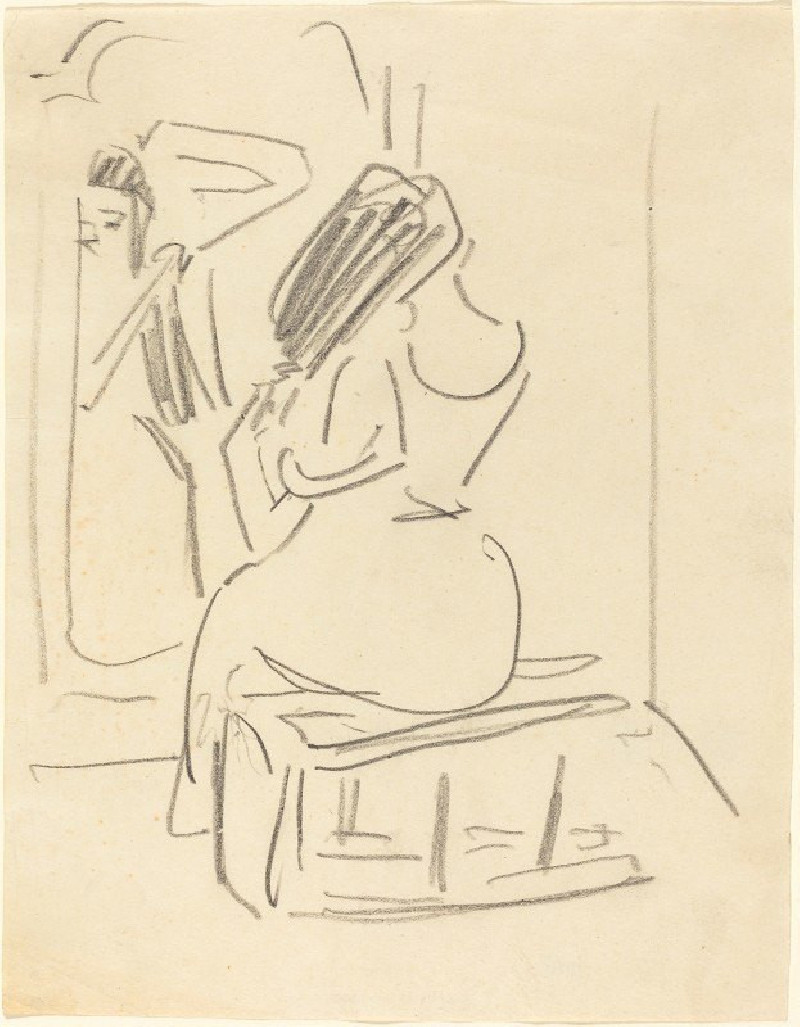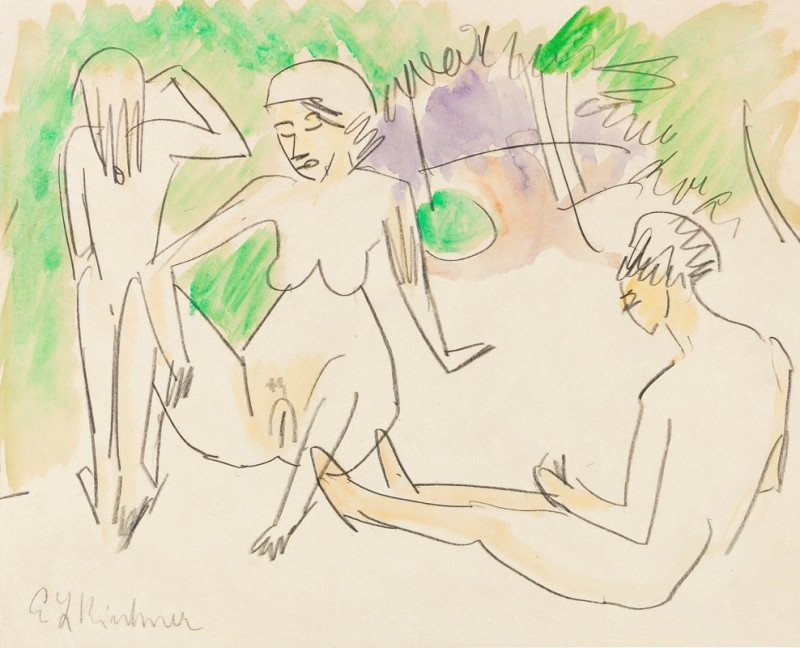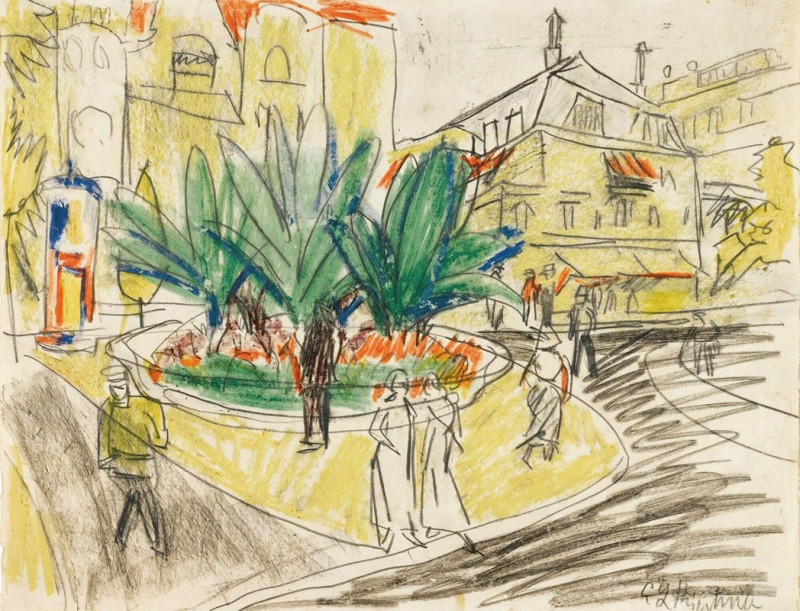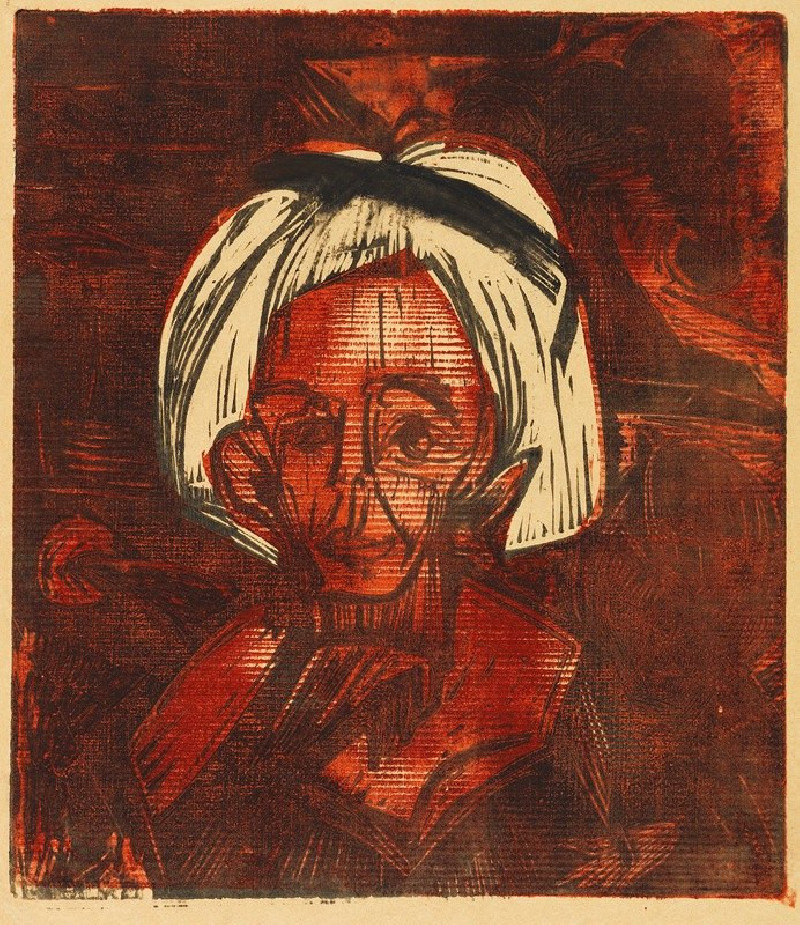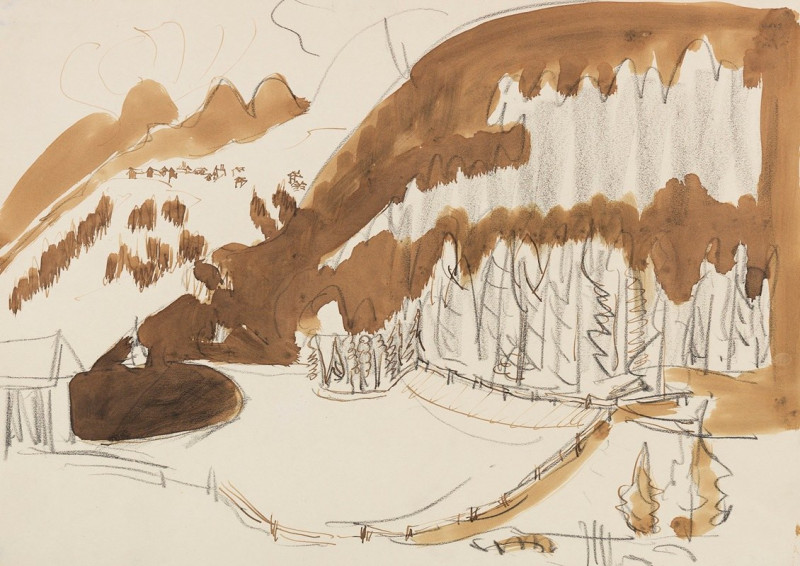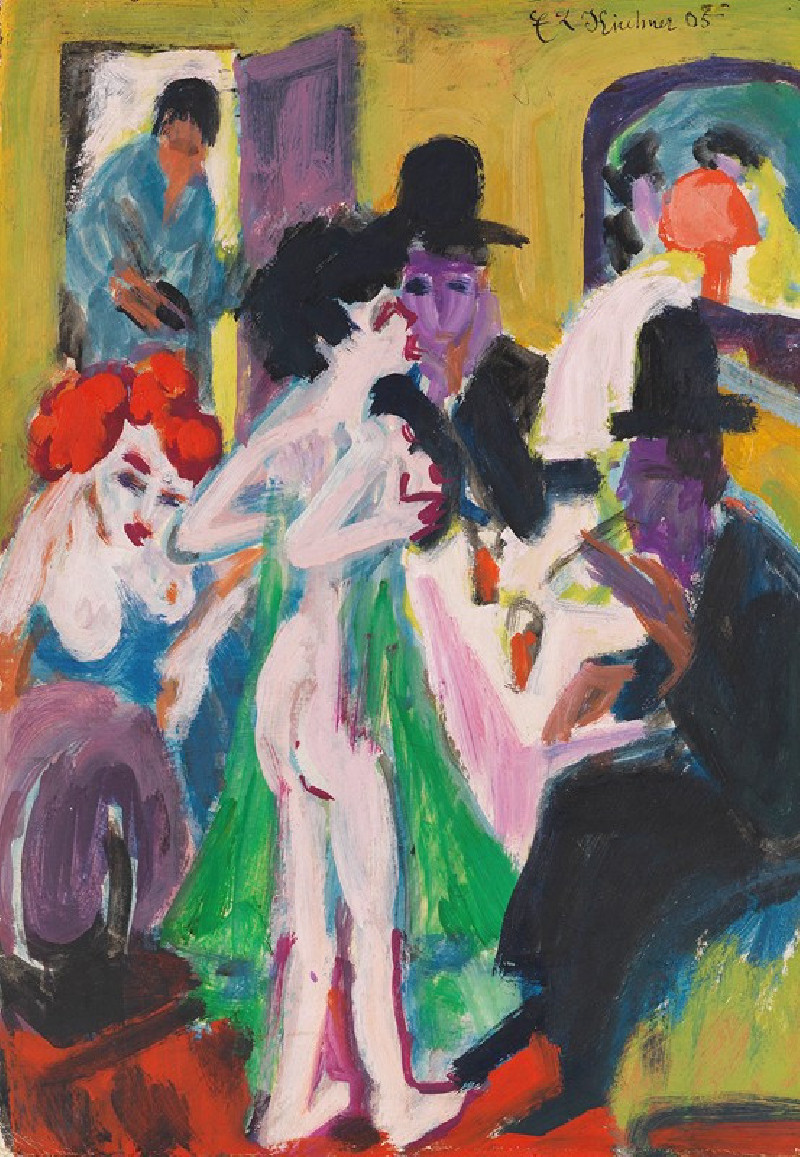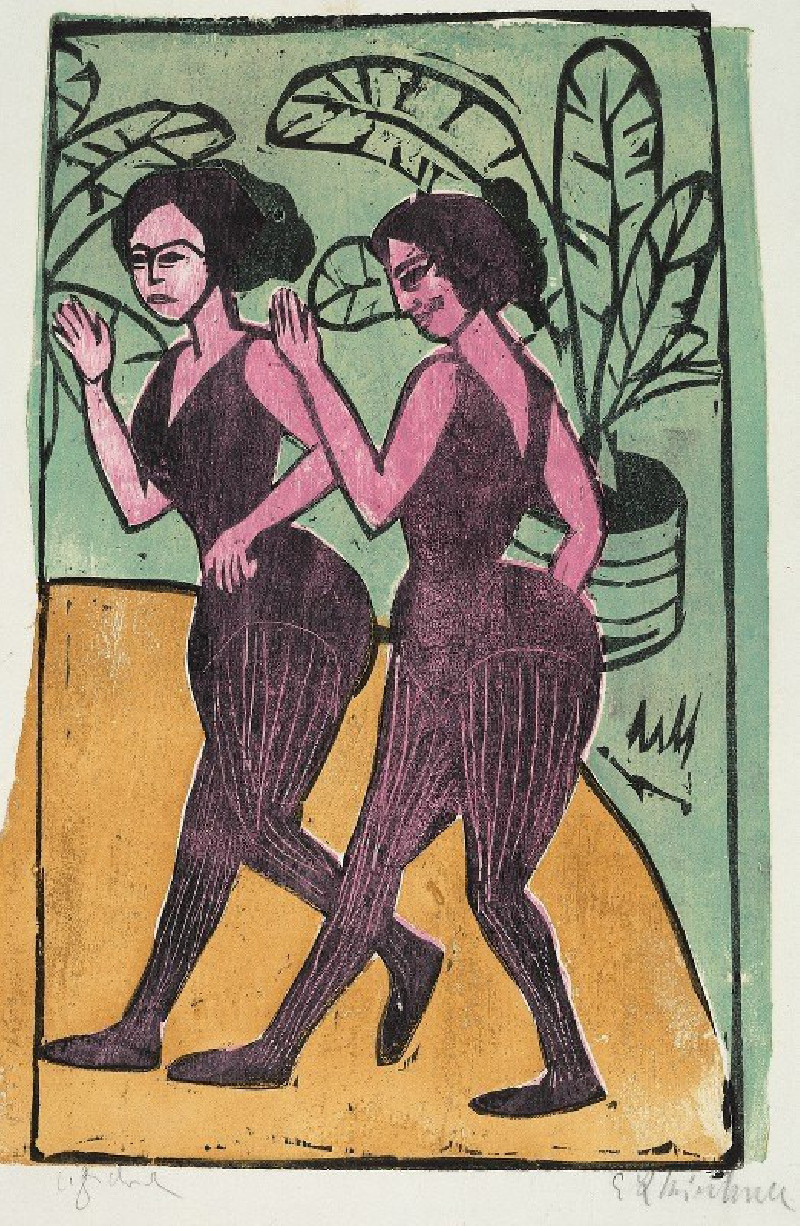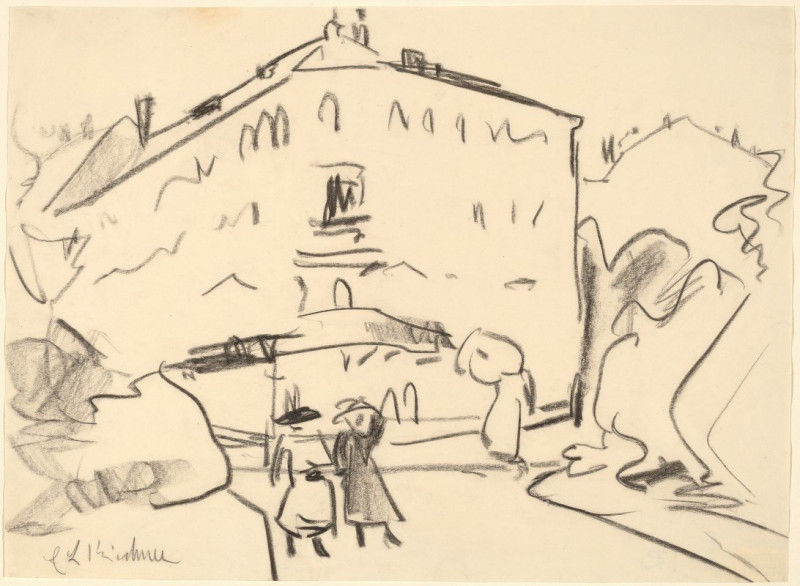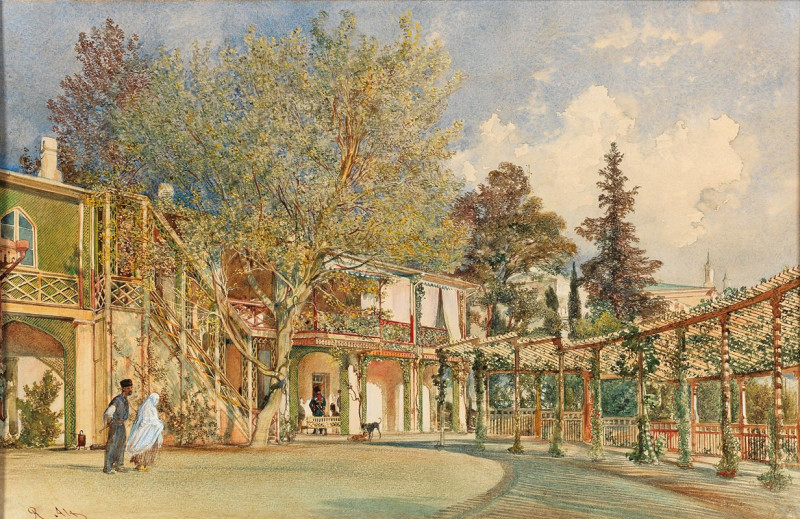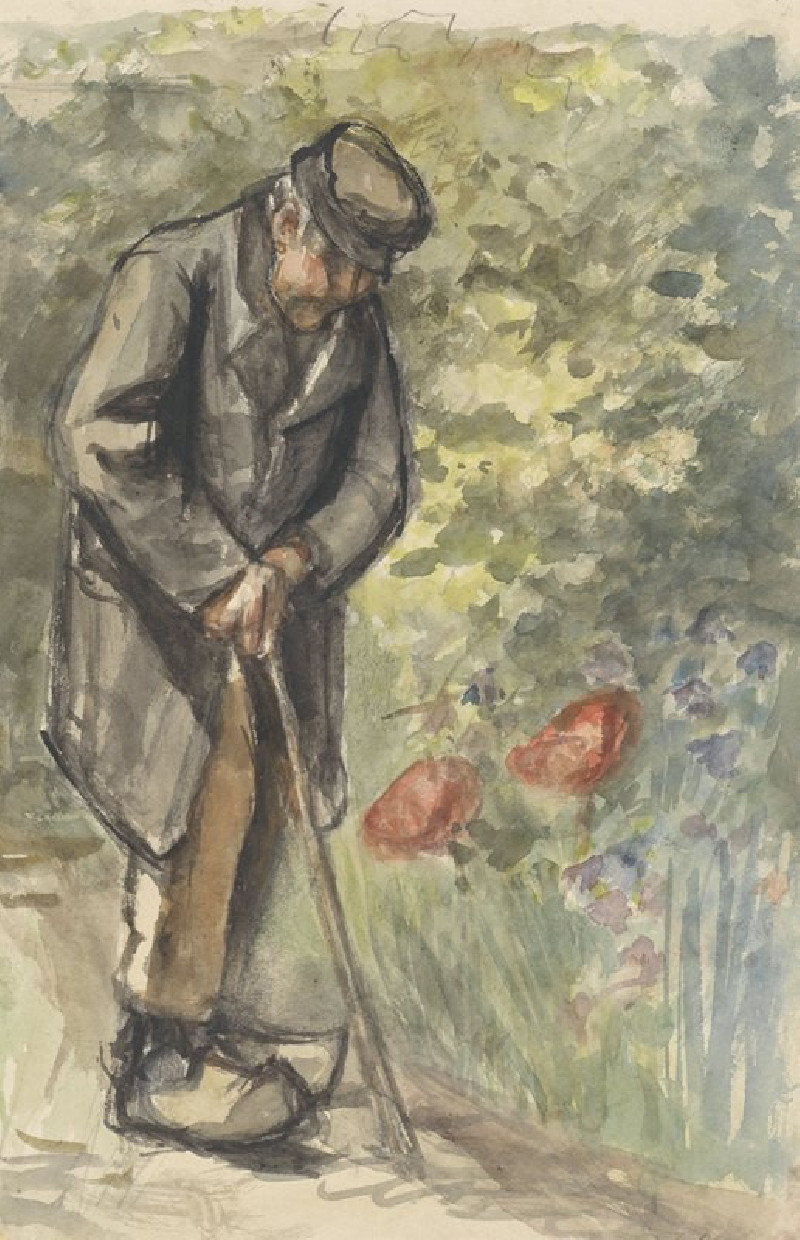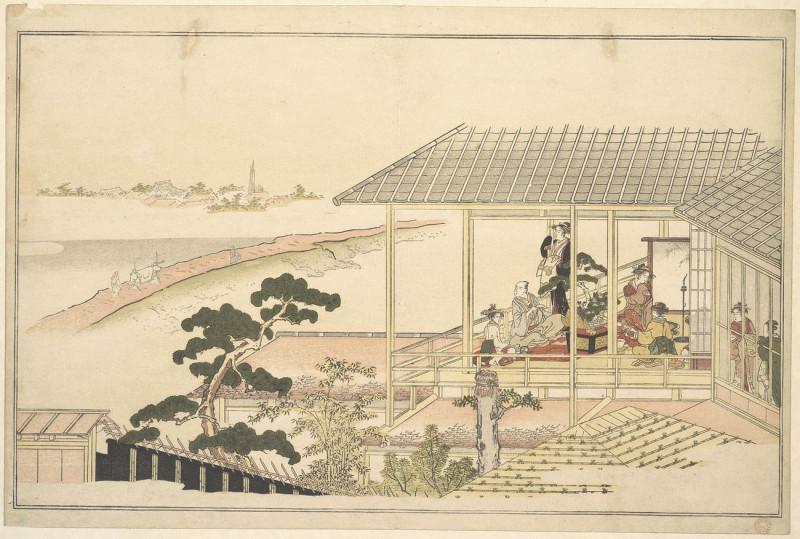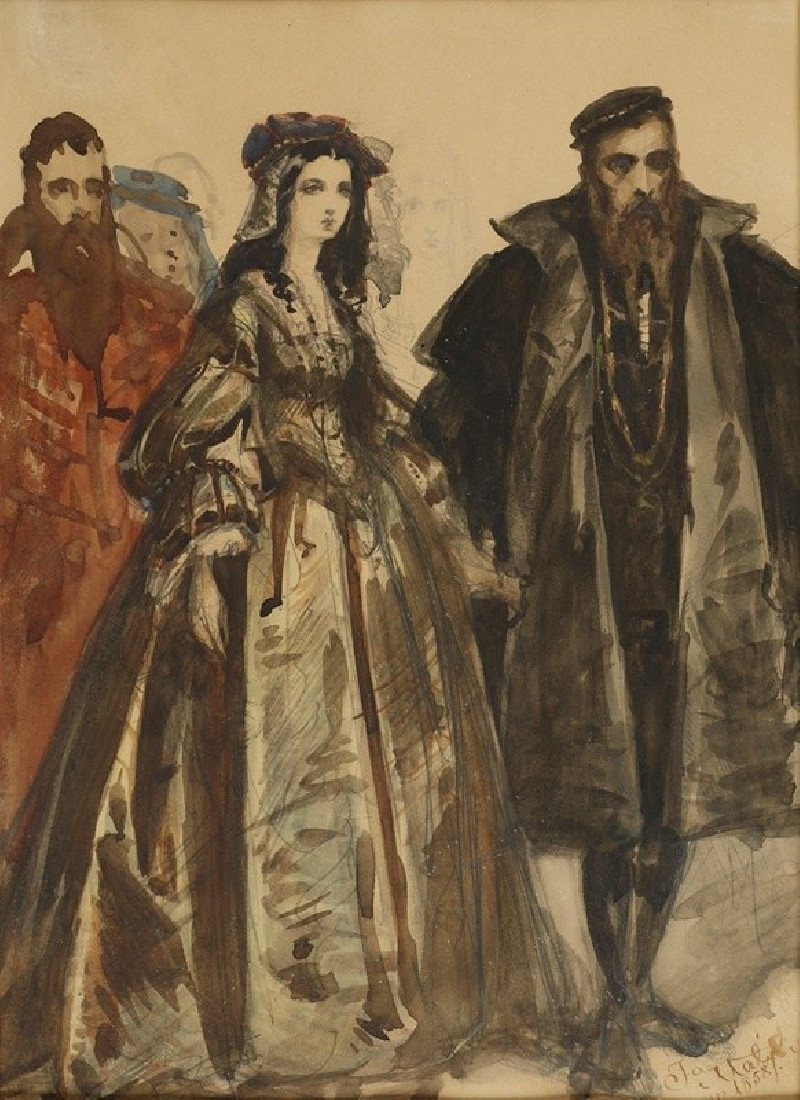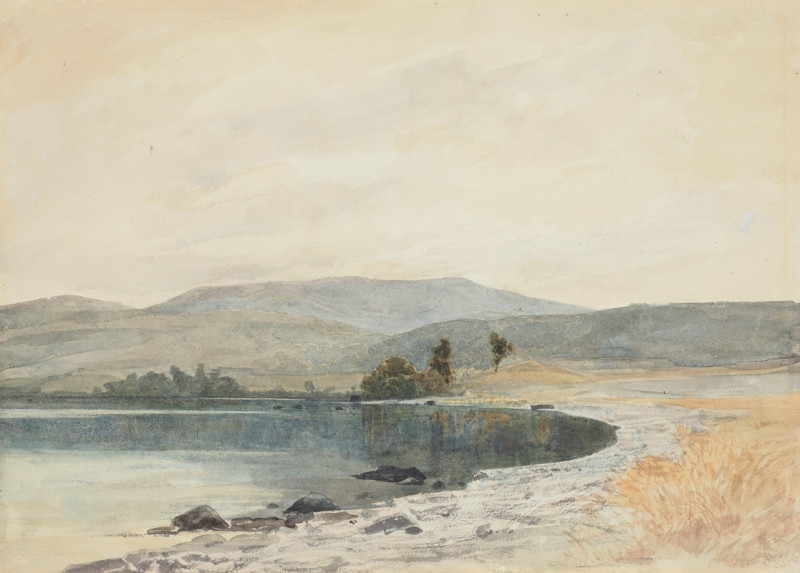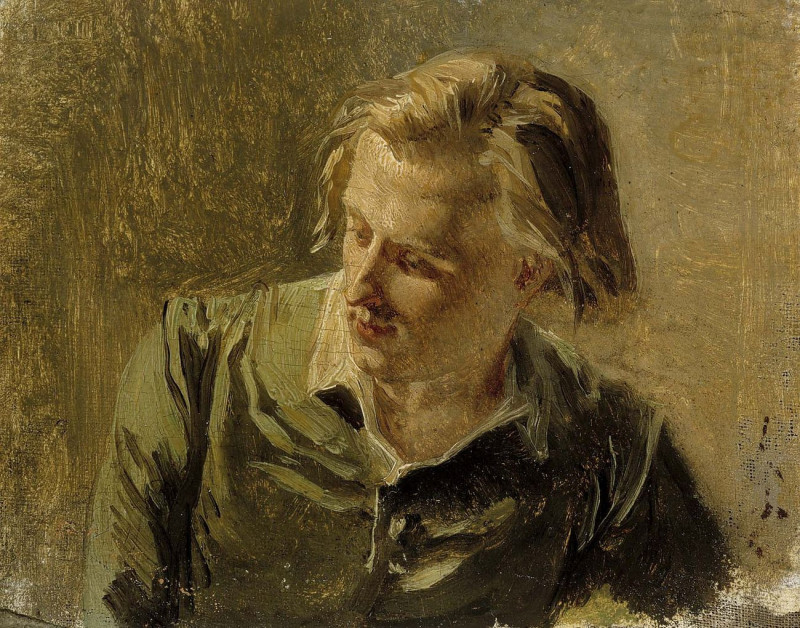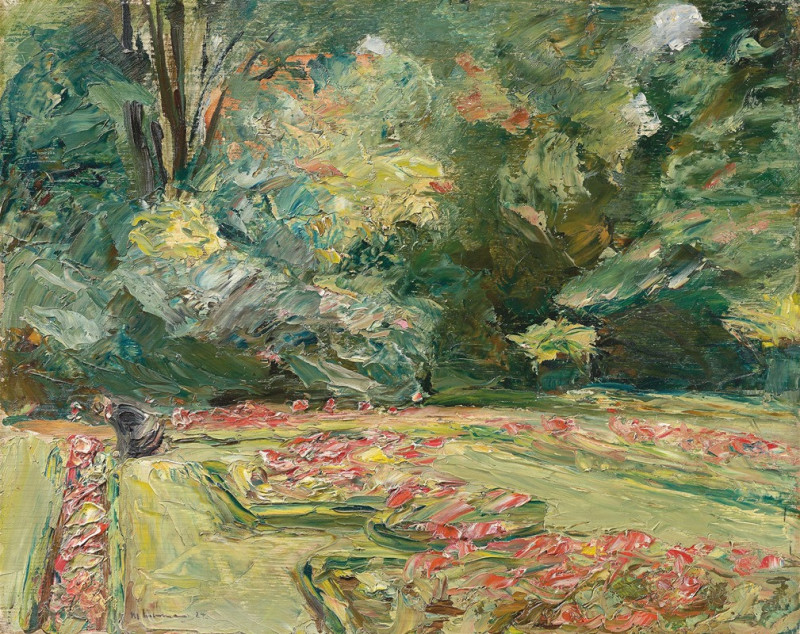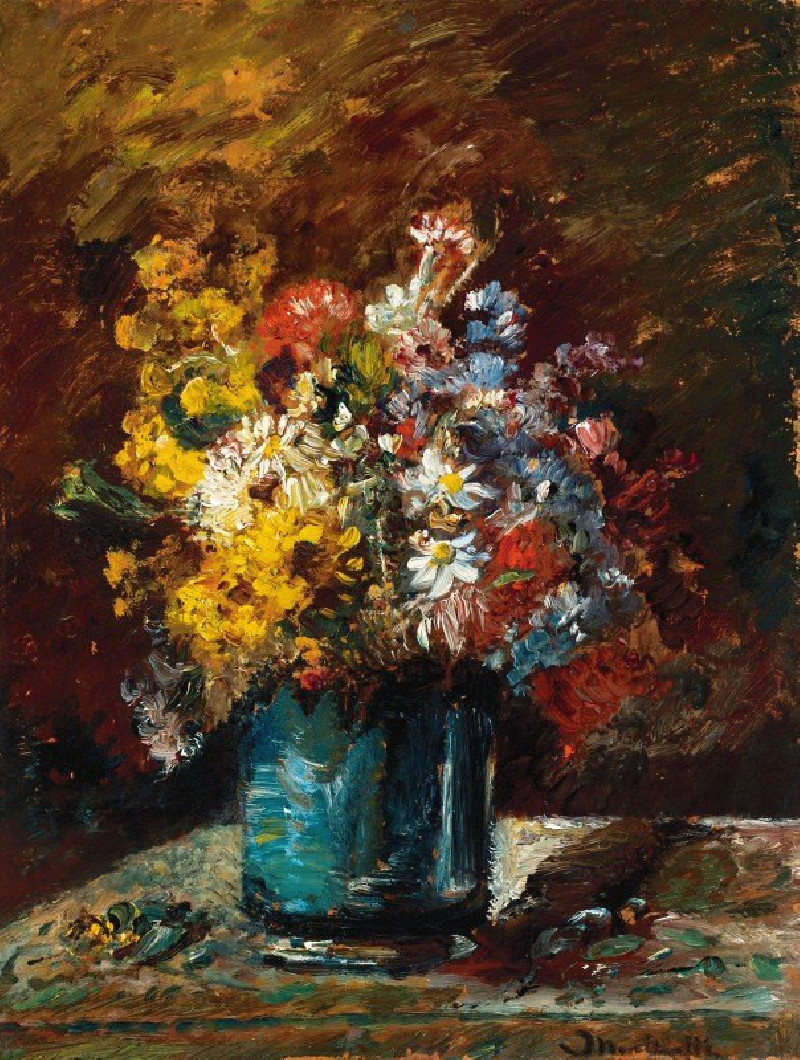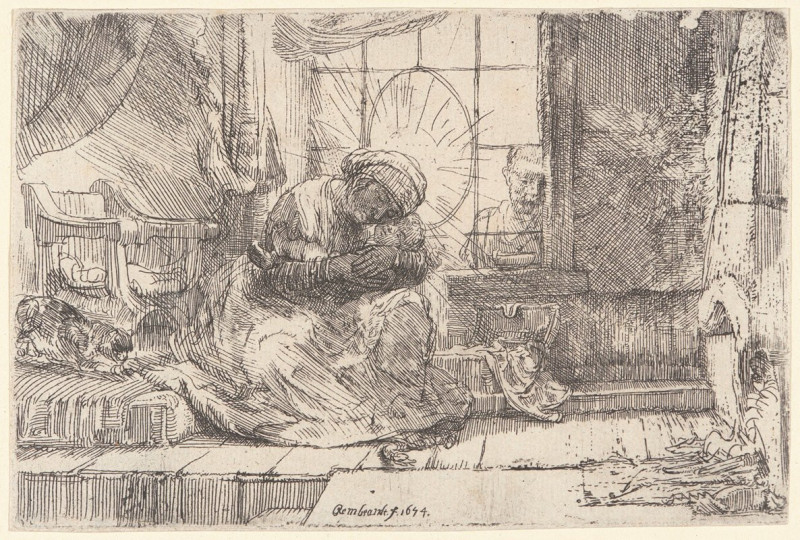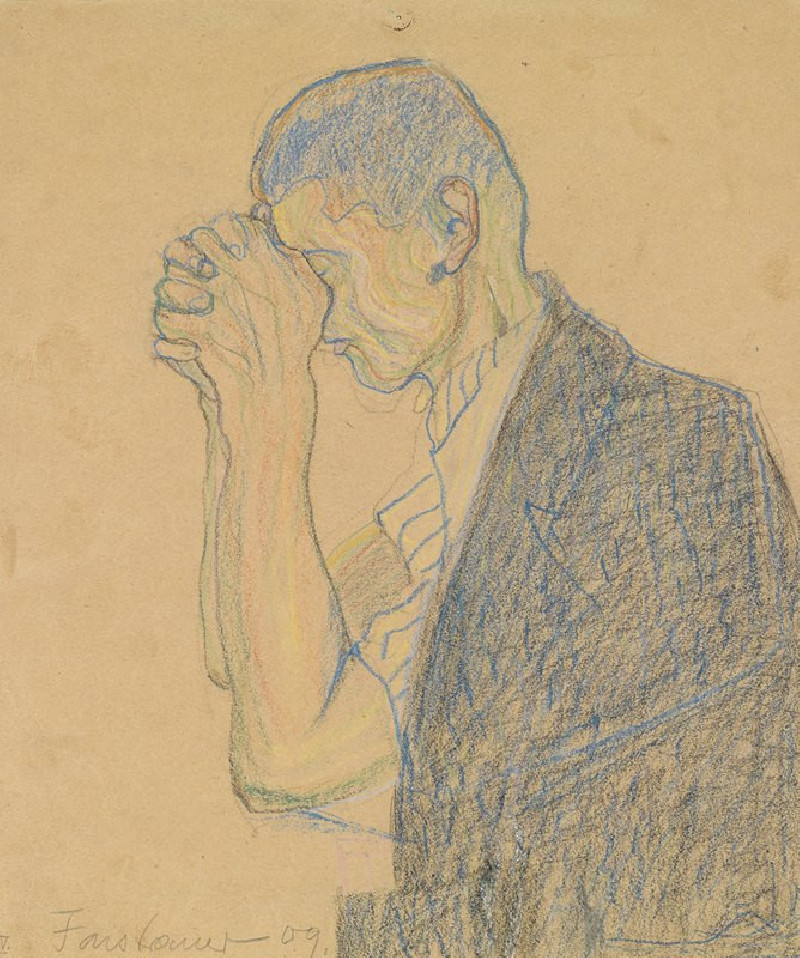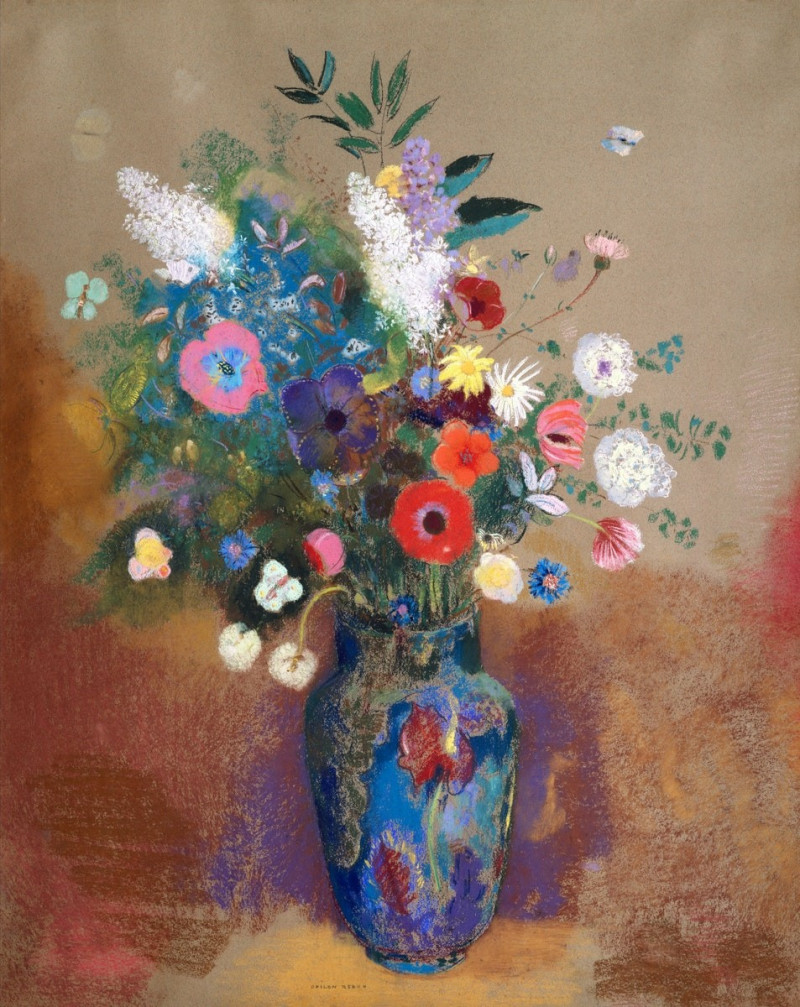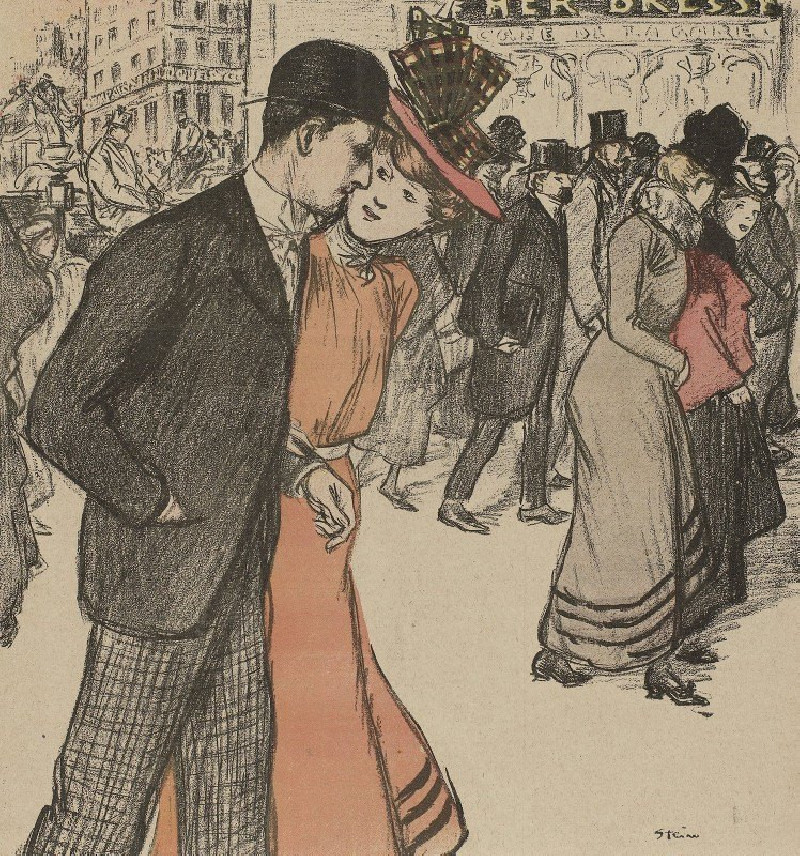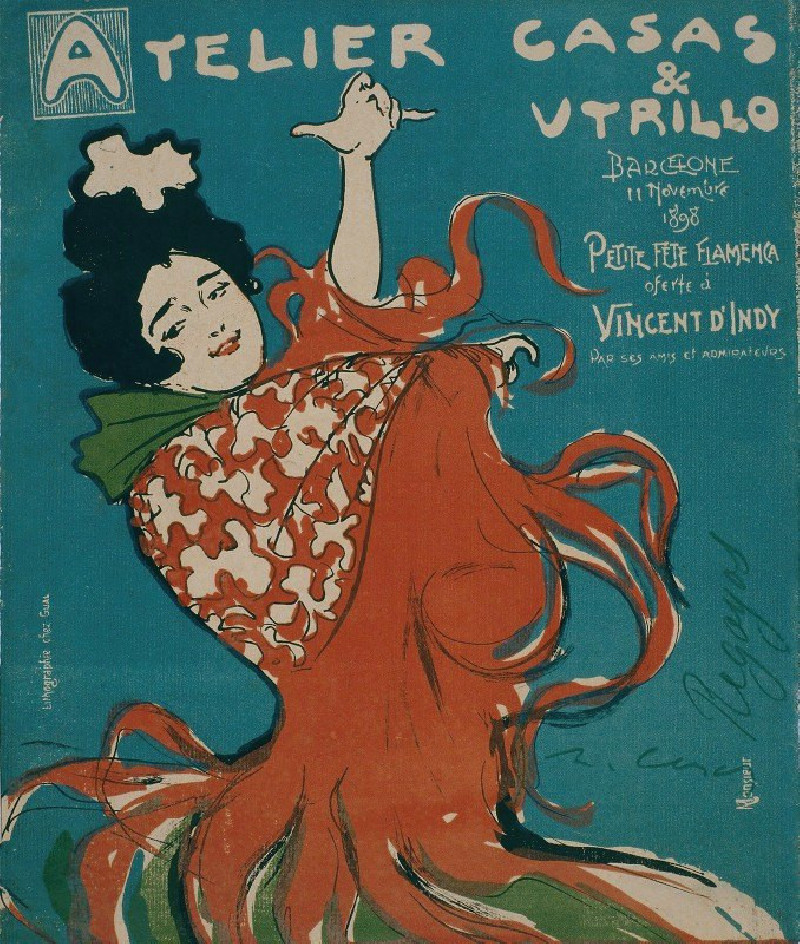Women Bathing Between White Stones (1912)
Technique: Giclée quality print
Recommended by our customers
More about this artwork
"Women Bathing Between White Stones" is a captivating example of Ernst Ludwig Kirchner's bold approach to color and form, hallmarks of the Expressionist movement. Created in 1912, this painting vividly depicts two nude women in a naturalistic setting, juxtaposed against the rugged white stones that frame the composition.The image, rich in stark contrasts and simplified shapes, conveys a sense of freedom and immediacy. Kirchner's style here is characterized by the use of flat areas of color and thick, defined outlines that echo the raw intensity and emotional resonance typical of Expressionist art. The women, rendered in earthy tones of orange and beige against a vibrant blue and white backdrop, appear both as part of the landscape and distinctly separate from it.In "Women Bathing Between White Stones," Kirchner does not aim for realistic portrayal but rather evokes the essence and mood of the scene. The setting, likely inspired by the lakes near Dresden where Kirchner and his peers often retreated, is transformed into a dynamic interplay of color, shape, and line.
Delivery
Returns
Ernst Ludwig Kirchner (1880–1938) was one of the most important German Expressionist painters. He was a co-founder of Die Brücke, a group of German expressionist artists formed in Dresden in 1905. Die Brücke and Kirchner took inspiration from Vincent Van Gogh and Edvard Munch, as well as African and Oceanic art. They used woodblock printing as a medium to showcase their signature style: flat, unrealistic images with vivid colors. The recurring themes in Kirchner's artworks included exotic cultures, faraway landscapes, self-portraits, dancers and Berlin street life. His paintings and prints effectively portrayed non-European cultures despite the fact that he never traveled outside of Europe.

